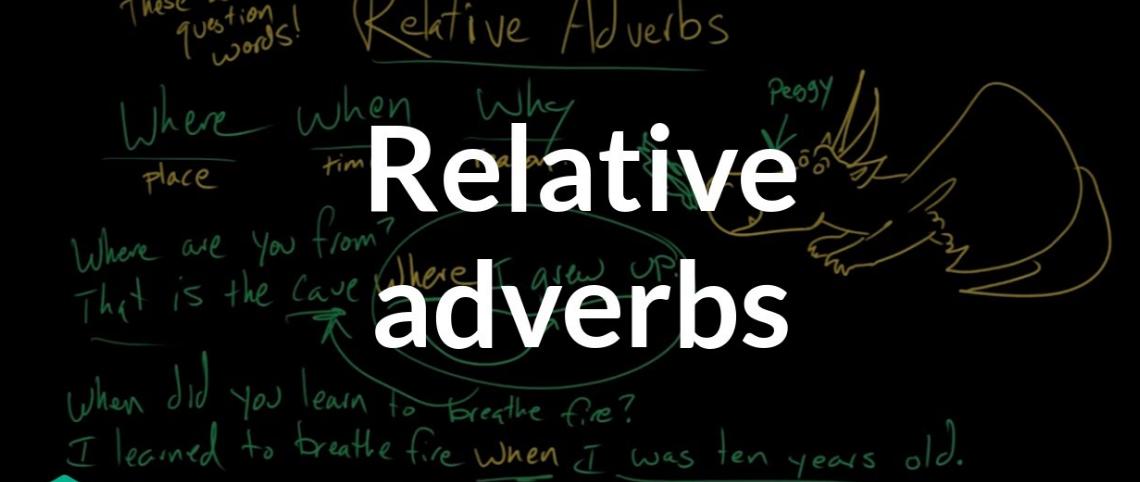Adjective clause atau juga sering disebut sebagai relative clause merupakan suatu klausa yang fungsinya sebagai adjektif, serta bisa mengubah arti dari suatu noun / pronoun. Berikut penjelasan selengkapnya.
Daftar Isi
Pengertian Adjective Clause

Adjective clause merupakan clause (serangkaian kata) yang mempunyai peran seperti adjective (kata sifat).
Karena perannya dalam memberikan “informasi baru” yang “related atau berkaitan” pada benda yang jadi subject kalimat, membuatnya sering disebut sebagai relative clause.
Namun, pada adjective clause tidak selalu memiliki kata – kata adjective umum. Perhatikan kalimat di bawah:
Contoh:
- The girl who was angry snapped her friend with the rubber
- Manchester City, whose owner is Sheikh Mansour, won the Premier League for the 6th times
Pada dua contoh tersebut, hanya kata pertama saja yang mengandung adjective murni, yakni “angry”, namun clause “who was angry” serta “whose owner is Sheikh Mansour” merupakan adjective clause.
Sebab kalimat “who was angry” dipakai guna mengartikan “the girl” & “whose owner is Sheikh Mansour” guna untuk mendefinisikan “Manchester City”.
Ciri – Ciri Adjective Clause

Berikut adalah beberapa ciri atau karakteristik khususnya, antara lain:
- Mempunyai subject serta verb yang lengkap
- Selalu diawali dengan relative pronoun (whom, who, that, whose, which) / relative adverb (where, when, why)
- Adjective clause ini memberikan informasi baru mengenai noun (subject dari suatu kalimat).
Komponen Adjective Clause Marker
Adjective clause marker merupakan kata yang biasa dipakai dalam mengawali suatu adjective clause yang meliputi relative pronoun & relative adverb.
Berikut penjelasannya:
1. Relative Pronoun

Sesuai dengan namanya, relative pronoun merupakan kata yang dipakai guna menghubungkan suatu clause atau phrase dengan menggunakan noun atau pronoun.
Pada umumnya, pemakaian relative pronoun pada satu kalimat dapat mengubah atau memberikan informasi tambahan terkait noun / pronoun.
Fungsi relative pronoun:
- Sebagai subjek (who, that, dan which).
- Sebagai objek (whom, that, who, dan which).
- Sebagai possessive (whose).
Macam – macam relative pronoun:
Berikut adalah macam – macam relative pronoun beserta contoh kalimatnya, antara lain:
a. Who
Biasanya dipakai untuk adjective clause yang noun-nya merupakan orang atau sesuatu yang hidup / bernama. Meski begitu, who pada umumnya diperuntukkan noun yang berupa manusia saja.
Contoh:
- Idan is the only man who has ever been loved by Yasa.
- Putra is the first person who helped the victims of the accident.
- I have a crush on a boy who has a prettier face than mine.
b. Whom
Whom merupakan relative pronoun yang mempunyai arti “orang yang mana”.
Notabene, whom merupakan kebalikan dari who, apabila who dipakai sebagai subject, maka whom dipakai pada noun yang menjadi object.
Contoh:
- God is to whom we deliver our prays and gratitudes.
- She is the woman to whom I always tell my feeling.
- Fatimah, from whom I know about writing, went to Canada next week.
c. Whose
Whose merupakan relative pronoun yang dipakai guna menunjukkan kepemilikan benda pada suatu subject.
Kata whose adalah singkatan dari who is / who has. Karena setelah whose, ada object yang menjadi milik dari suatu subject.
Contoh:
- Jessica, whose dog was found by me, gives me a gift.
- John, whose brother is also a lead singer, planned to duet with his brother, Josh.
- Thousands of people enter the Tiban mosque whose design is so beautiful.
d. Which
Which merupakan relative pronoun yang dipakai guna menunjuk sebuah benda di antara beberapa benda yang nantinya harus dipilih.
Tak hanya itu, which juga bisa dipakai untuk restrictive serta non-restrictive clause.
Contoh:
- He didn’t remember which person he had bumped into.
- My car which is lost yesterday has just been returned by police.
- We’ll order a package deal which is including meals, hotels and other accommodations.
e. That
That merupakan relative pronoun yang fungsinya dapat dipakai untuk restrictive clause.
Apabila kalian hendak memakai that di dalam adjective clause, pastikan adjective clause itu mempunyai arti penting untuk kalimat tersebut.
Contoh:
- I need to tell you that I love you so much (RIGHT)
- Dog, that has Latin name Canis Lupus Familiaris, is a carnivore (WRONG)
Pada dua contoh di atas, relative pronoun “that” dipakai secara benar hanya pada contoh pertama saja. karena adjective clause dibelakang that mampu memengaruhi pengertian dari kalimat tersebut.
Sedangkan contoh kedua, keterangan “…has Latin name Canis Lupus Familiaris..” tidak penting untuk kalimat tersebut.
Kata “Dog is a carnivore” sudah dapat dipahami meski pada tengah – tengah kalimat tidak ditambahi “has Latin name Canis Lupus Familiaris”.
2. Relative Adverb

Relative adverb merupakan adverb yang dipakai untuk menyambungkan independent clause dengan adjective clause-nya.
Relative adverb terdiri dari empat kata, antara lain:
a. Where
Where merupakan relative adverb yang dipakai guna menerangkan berupa tempat.
Contoh:
- I don’t know where to go from here
- The town where he lived is collapsed by the tsunami
- The problem is where will we go from here
b. When
When merupakan relative adverb yang dipakai guna memberikan keterangan waktu.
Contoh:
- I don’t remember when she went into my room
- The day when I met Harry is the best day of my life
- She’s been left by her parents when he was still an infant
c. How
How cenderung mengawali keterangan atau deskripsi terhadap sesuatu.
Contoh:
- Danila doesn’t want to tell me how was the movie
- Do you know how to go to the train station nearby?
- Rosa asked me how can I broke up with my boyfriend
d. Why
Why dipakai guna menerangkan adjective clause yang menunjukkan pada alasan.
Contoh:
- I understand why you’re mad at her
- I don’t know why he left the chat group
- Tell the school’s principal why you left the class early yesterday
Adjective Clause pada Restrictive & Non-Restrictive Clauses
Berikut sedikit penjelasan terkait adjective clause pada restrictive dan non-restrictive clauses, antara lain:
1. Restrictive Clauses

Restrictive clauses merupakan kalimat independen serta dependen yang terikat, apabila dependen-nya dihilangkan maka pengertian dari independennya akan terpengaruh.
Sehingga, pada restrictive clause, kemunculan dari adjective clause sangatlah penting.
Contoh:
- Neil Armstrong is the first man who stepped his feet on the moon
Pada kalimat di atas, adjective clause-nya berupa kalimat “who stepped his feet on the moon”. Apabila adjective clause itu dihilangkan, maka pengertian dari clauses di atas akan berubah.
Contoh lain:
- I don’t know what to say now, I’m so speechless.
- The boy who broke up with you is taken by another girl today.
- The glasses which you broke is an expensive sunglasses.
2. Non-Restrictive Clauses

Merupakan kebalikan restrictive clauses, pada non-restrictive, clauses tidak masalah apabila adjective clause-nya tidak dimasukan.
Atau dapat disebut independent clause pada kalimat tersebut maknanya tidak akan berubah, walau tidak disertai dengan adjective clause-nya.
Contoh:
- Hana, whose Dad is passed away 5 years ago, paid the college fees by herself
Adjective clause-nya berupa kalimat “whose Dad is passed away 5 years ago” yang tidak akan memengaruhi makna dari keseluruhan kalimat.
Sebab inti kalimatnya adalah “Safira paid the college fees by herself”.
Contoh lain:
- The man, who is deeply religious, goes to the mosque five times a day
- Selena Gomez, whom I really like, plays a new movie
- Harry Potter, whose parents were killed by Voldemort, went to Hogwarts at 1991